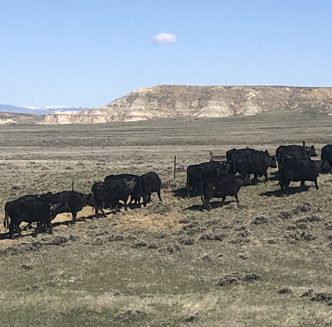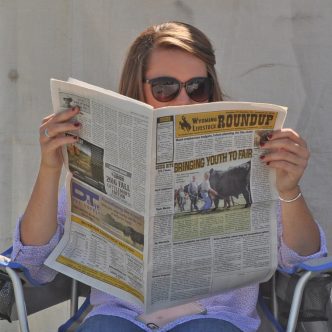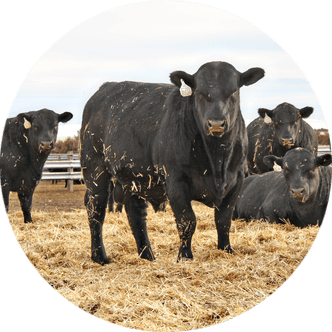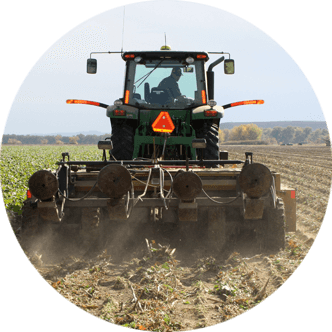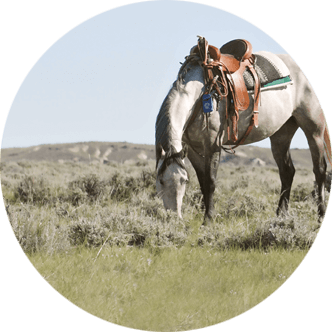Straw bale gardening solves soil issues
Straw bale gardens have become a popular solution for growers plagued with poor soil conditions or limited space, offering a useful combination of both raised bed and container gardening to grow a wide variety of fruits, vegetables and flowers.
Joel Karsten, a certified nursery and landscape professional through the Minnesota Nursery and Landscape Association, pioneered this unique gardening strategy, which he describes in his worldwide bestseller “Straw Bale Gardens Complete.”
Karsten says, “Growing a successful garden is difficult enough for those with terrific soil, but with poor soils, it can be virtually impossible. Straw bale gardening allows anyone – even those with the worst soil conditions – to grow a terrific garden that is productive and much less labor intensive.”
“Stop spending money buying containers, building raised beds and buying special planting mixes,” Karsten continues. “Minimal maintenance results in maximum production through straw bale gardening. It will completely change everything you thought you already knew about gardening.”
Assembly and conditioning
The concept behind straw bale gardening is that the bale serves as the container and the primary growing medium all in one, featuring many of the benefits of a raised bed, which provides better protection from pests and disease and requires minimal weeding.
To accomplish a successful straw bale garden, growers must condition bales with fertilizer and water prior to planting, which activates a slow composting process, helps prevent nutrient tie-up and provides an ideal environment for growing plants.
According to University of Missouri Extension Horticulturist David Trinklein, conditioning bales involves soaking them with water for 12 consecutive days.
On the first, third and fifth days, one-half cup of high-nitrogen fertilizer such as urea, ammonium nitrate or lawn fertilizer should be added to each bale. On the seventh and ninth day, individuals should reduce fertilizer to one-fourth of a cup, and on the 11th day, they should provide one cup of general-purpose fertilizer such as a 12-12-12 mix to each bale.
If using lawn fertilizer, Trinklein notes individuals should ensure it is not the “weed and feed” type, which contains herbicides with the potential to harm garden plants.
On the 12th and final day, individuals can begin planting their straw bales, after ensuring the bales are cool to the touch. Trinklein suggests digging small holes into the top of the bales, setting plants into the holes and filling them with a soilless medium to cover the plant’s roots.
Water should be added to the base of the plant to settle the medium around the root system.
“If planting seeds, put a layer of sterile potting media on top of the bale and tamp it down into the bale,” Trinklein advises. “Plant seeds according to package instructions.”
Additionally, Trinklein notes straw should be used instead of hay, since hay contains weed seeds and is usually too dense for good results. He recommends choosing bales held together tightly with twine and avoiding bales made from wheat or oats treated with an herbicide.
“To assemble a straw bale garden, first choose a location that gets at least six to eight hours of direct sunlight. Once bales are watered, they become heavy and hard to move. If you place bales on the ground, put them on a base of thick layers of newspaper to control weeds. Set bales so twine is on the outside and cut ends are face up. Place bales in single rows to allow best access, air circulation and sun exposure,” Trinklein adds.
Other considerations
Trinklein goes on to outline a few other important considerations when planting a straw bale garden, one of the most critical being a proper fertilization strategy.
He notes, because straw contains little nutrient content, nitrogen deficiency is commonplace in straw bale gardens and plants should be regularly provided with a water-soluble liquid fertilizer solution.
However, it is also important to not overfertilize. Trinklein notes this can lead to plants with abundant vegetative growth and little fruit.
“Too much nitrogen causes pollen abortion and flowers to fall off,” he explains. “And, growers should be especially careful not to overfertilize vining crops such as cucumbers and melons.”
Trinklein also urges growers not to crowd plants when planting in a straw bale, and he notes cool-season varieties can be planted as early as mid-March if a protective cover is used to prevent freezing.
Varieties Trinklein has found to grow well in a straw bale garden include salad greens, peppers, eggplant and tomatoes.
“Straw bales provide conditions for good root growth, especially for tomatoes,” he concludes. “You will see few weeds, but mushrooms may appear. Discard them. Earthworms like nutrient-enriched bales and help plants thrive. You should see fewer pests than in conventional gardening.”
Hannah Bugas is the managing editor of the Wyoming Livestock Roundup. Send comments on this article to roundup@wylr.net.

